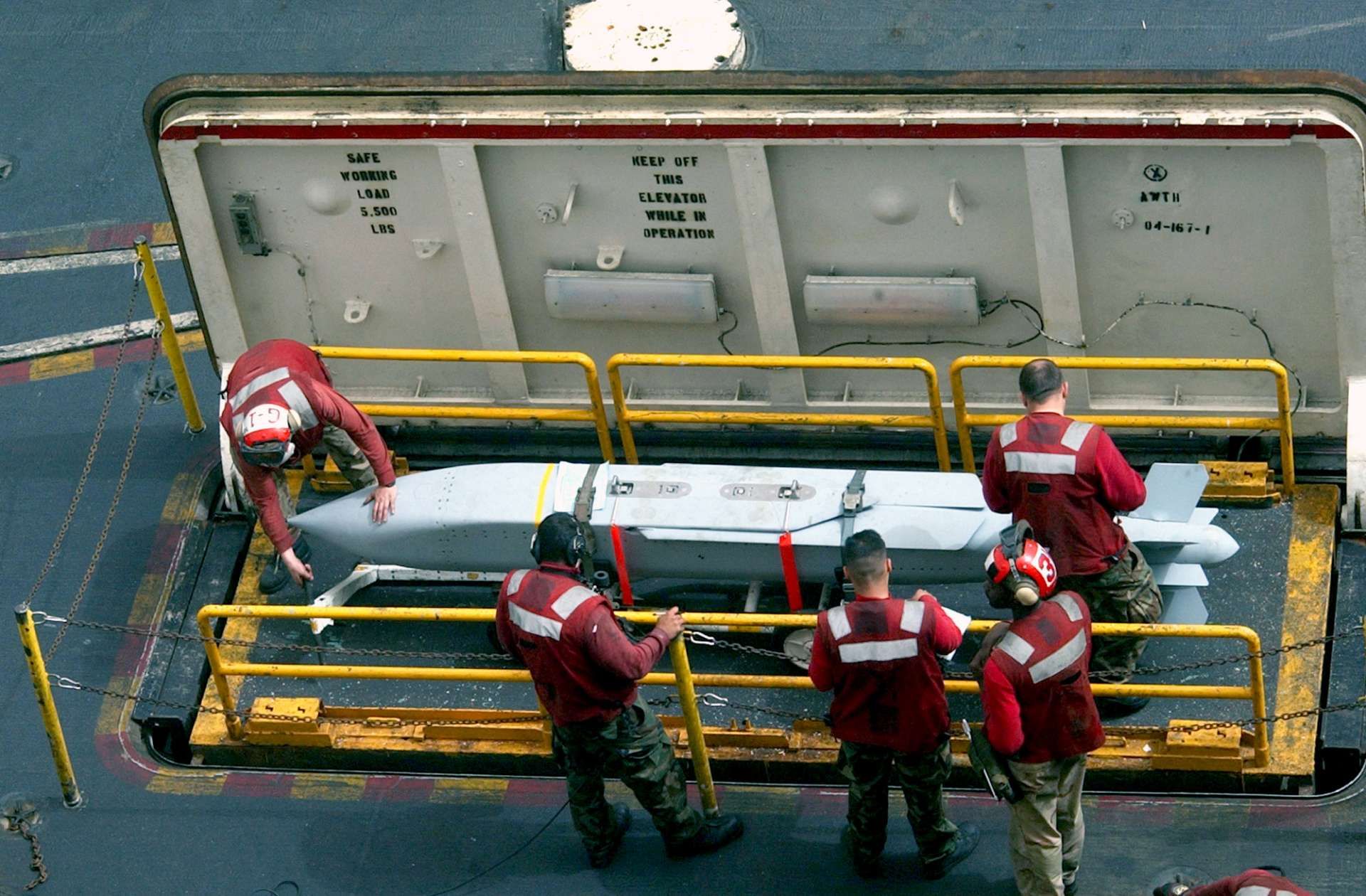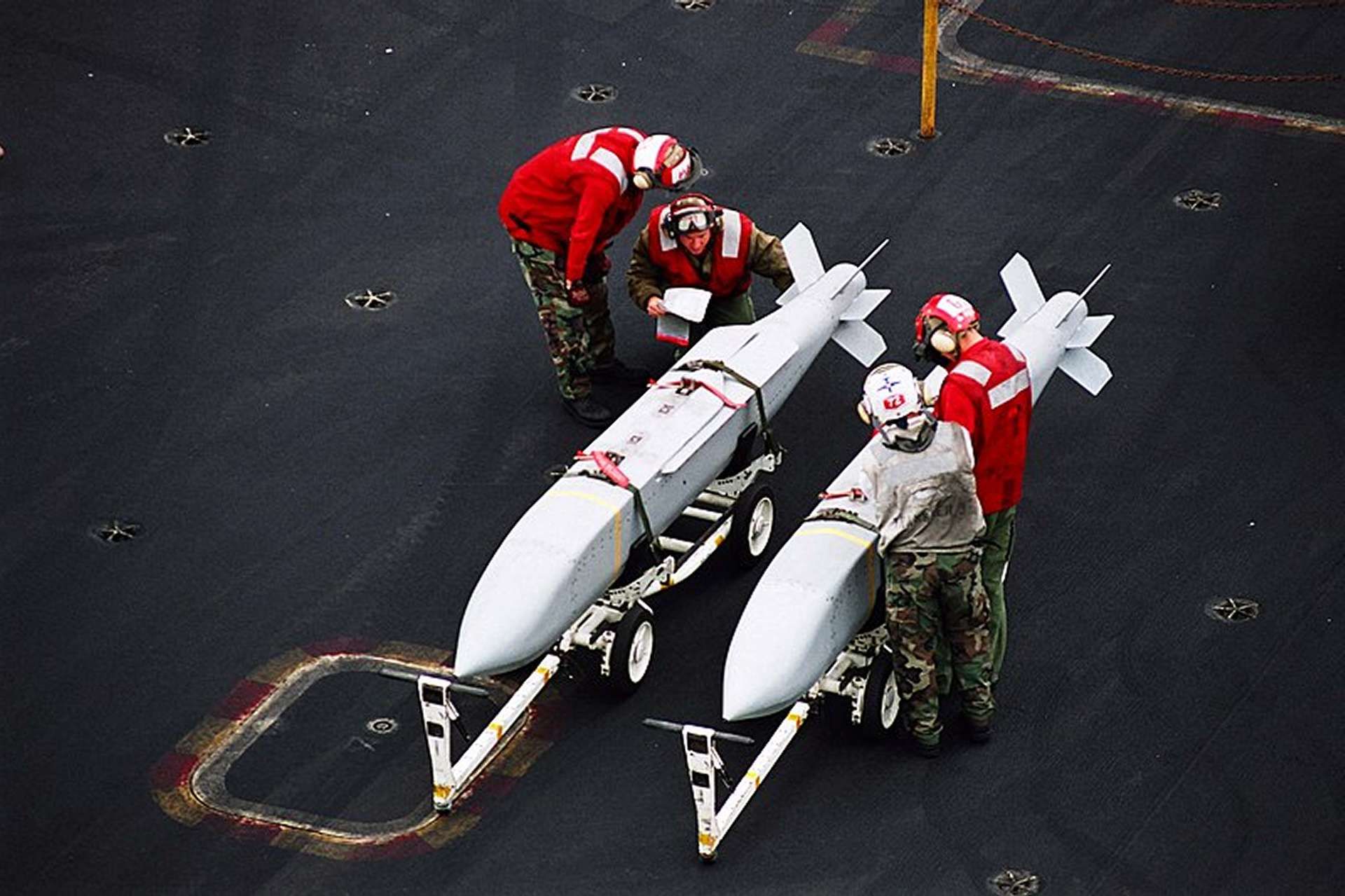Breaking News
Breaking News: US confirms delivery of long-range AGM-154 Joint Standoff Weapons for Ukraine's F-16.
On September 26, 2024, US President Joe Biden confirmed the delivery of the AGM-154 Joint Standoff Weapon (JSOW) to Ukraine as part of a $375 million security assistance package. Compatible with the donated F-16 fighter jets, the JSOW features a range of up to 130 kilometers and is intended to enhance Ukraine's long-range strike capabilities.
Follow Army Recognition on Google News at this link

Compatible with the donated F-16 fighter jets, the JSOW features a range of up to 130 kilometers and is intended to enhance Ukraine's long-range strike capabilities against Russia. (Picture source: US DoD)
In a statement released from the White House, President Biden welcomed Ukrainian President Volodymyr Zelenskyy, highlighting the nearly three-year-long collaboration between the United States and Ukraine. He underscored the administration's priority in providing comprehensive support to help Ukraine prevail in its conflict. Biden noted Ukraine's successes, including the defense of Kyiv and the reclamation of over half the territory initially seized by Russian forces. However, he acknowledged that further assistance is required to continue these efforts effectively.
The Biden administration's latest aid package includes a Presidential Drawdown Authority (PDA) valued at approximately $375 million. This package encompasses a range of military equipment, including air-to-ground munitions, high mobility artillery rocket systems (HIMARS) ammunition, artillery shells, anti-tank weapons, armored vehicles, and various support systems such as small arms, patrol boats, and demolition equipment. This marks the sixty-sixth tranche of equipment provided from Department of Defense inventories since August 2021, underscoring the sustained commitment of the United States and its allies to Ukraine’s defense.
A key component of this assistance is the delivery of JSOWs, long-range precision-guided munitions designed to increase the effectiveness of Ukraine's air force. The JSOW, developed through a joint venture between the U.S. Navy and the Air Force, serves as a glide bomb capable of striking defended targets from extended distances, thereby enhancing aircraft survivability. These weapons have been employed in various conflicts since their introduction in 1998 and are valued for their precision and versatility in engaging a range of targets, including armored vehicles and missile sites.

Operationally, the JSOW has been deployed in various conflicts, including Operation Desert Fox, NATO's bombing of Yugoslavia, the wars in Afghanistan and Iraq, and now, operations by Ukraine. (Picture source: US DoD)
In addition to the JSOWs, the United States is enhancing Ukraine’s long-range strike capabilities by refurbishing and supplying an additional Patriot air defense battery along with Patriot missiles. This effort builds on previous decisions to redirect U.S. air defense exports to Ukraine, providing hundreds of Patriot and AMRAAM missiles over the next year to bolster the defense of Ukrainian cities and protect civilians. Furthermore, the Department of Defense is expanding training programs for Ukrainian F-16 pilots, with plans to support the training of an additional 18 pilots in the coming year, thereby strengthening the operational capacity of Ukraine’s air force.
As part of the newly announced security assistance package, the Department of Defense has allocated all remaining security assistance funds appropriated for Ukraine by the end of Biden's term. This includes the distribution of funds from the Ukraine Security Assistance Initiative, amounting to $2.4 billion, which will enhance Ukraine's air defense capabilities, provide unmanned aerial systems, air-to-ground munitions, and support the maintenance and sustainment of Ukraine’s defense infrastructure. Additionally, Biden authorized $5.5 billion in Presidential Drawdown Authority to ensure the timely provision and replenishment of U.S. military equipment for Ukraine.
The AGM-154 Joint Standoff Weapon (JSOW) is a precision-guided glide bomb developed collaboratively by the United States Navy and the Air Force. Entering service in December 1998, the JSOW is engineered to engage a variety of surface targets from distances that keep the launching aircraft outside the effective range of many anti-aircraft defense systems. This standoff capability allows aircraft to deploy the weapon while minimizing exposure to enemy fire. The JSOW employs a glide mechanism with deployable wings, enabling it to strike targets such as parked aircraft, trucks, armored personnel carriers, and surface-to-air missile sites.

The AGM-154 can be launched from low altitudes with a range of 22 kilometers/12 nautical miles or from high altitudes extending up to 130 kilometers/70 nautical miles. (Picture source: US DoD)
The Joint Standoff Weapon (JSOW) uses an Inertial Navigation System (INS) combined with Global Positioning System (GPS) technology for guidance, with the AGM-154C variant incorporating terminal infrared homing to enhance targeting accuracy. The weapon can be launched from low altitudes with a range of 22 kilometers (12 nautical miles) or from high altitudes extending up to 130 kilometers (70 nautical miles).
Development of the JSOW began in the early 1990s under the Defense Systems & Electronics division of Texas Instruments, which conducted the first funded flight test in April 1991. The program transitioned to Raytheon after Texas Instruments sold its defense division in January 1997. The JSOW entered operational service in January 1999 and has since been adopted by several international air forces, including those of Poland, Turkey, Finland, Greece, and Singapore. Its modular design allows for multiple variants, each tailored to specific mission requirements through different payload configurations. This modularity facilitates upgrades and the integration of new technologies, ensuring the JSOW remains operationally relevant. The weapon’s dimensions include a length of 410 centimeters, a wingspan of 270 centimeters, and a weight ranging from 483 to 497 kilograms, depending on the variant.
The JSOW family comprises several variants, each with distinct features and payloads. The AGM-154A serves as the baseline model, equipped with BLU-97/B Combined Effects Bomb submunitions for area suppression. The AGM-154B was developed with BLU-108/B sensor-fuzed submunitions for anti-armor roles but was not procured by the Navy. The AGM-154C, also known as the BROACH variant, incorporates a unitary warhead with an imaging infrared terminal seeker for targeting hardened structures.

The JSOW employs a glide mechanism with deployable wings, enabling it to strike targets such as parked aircraft, trucks, armored personnel carriers, and surface-to-air missile sites. (Picture source: US DoD)
Additionally, the JSOW-ER variant was developed to significantly extend the weapon's range; however, its production was discontinued in favor of other missile systems like the AGM-158B JASSM-ER. The JSOW's operational flexibility is further demonstrated by its compatibility with a wide range of aircraft, including Navy platforms such as the F/A-18C/D and F/A-18E/F, Air Force aircraft like the F-16 Block 40/50/60, B-1B, B-2A, B-52H, F-15E, and F-35A/C, as well as the JAS 39 Gripen, which is also offered by Sweden to Ukraine.
Operationally, the JSOW has been deployed in various conflicts, including Operation Desert Fox, NATO's bombing of Yugoslavia, the wars in Afghanistan and Iraq, and support operations for Ukraine. Since its introduction, over 400 units have been utilized, demonstrating its application across different combat scenarios. The weapon is compatible with multiple aircraft platforms, enhancing its deployment flexibility across different branches of the military and allied nations.
Current operators of the JSOW include Australia, Canada, Finland, Greece, Morocco, the Netherlands, Poland, Qatar, Saudi Arabia, Singapore, Taiwan, Turkey, Ukraine, the United Arab Emirates, and the United States. Ongoing upgrades, such as the JSOW Block II and Block III (C-1) variants, aim to enhance its electronic countermeasure resistance and operational capabilities, ensuring the JSOW remains a viable option for air-to-surface engagements from safe standoff distances.

Ongoing upgrades, such as the JSOW Block II and Block III (C-1) variants, aim to enhance its electronic countermeasure resistance and operational capabilities. (Picture source: US DoD)


























